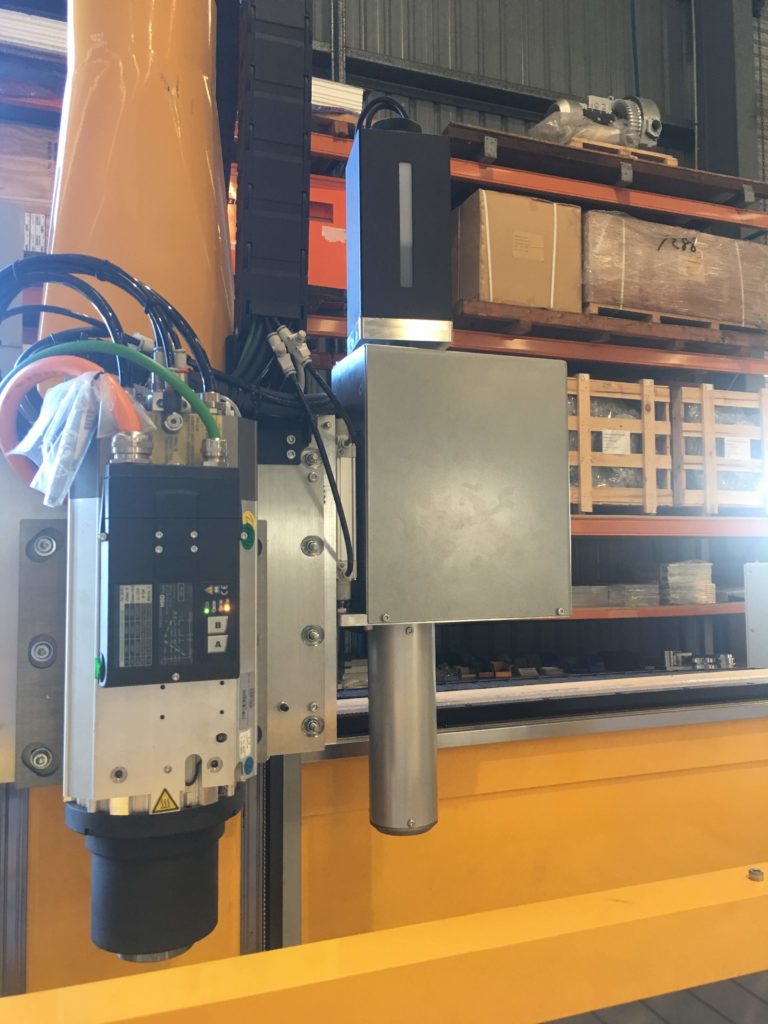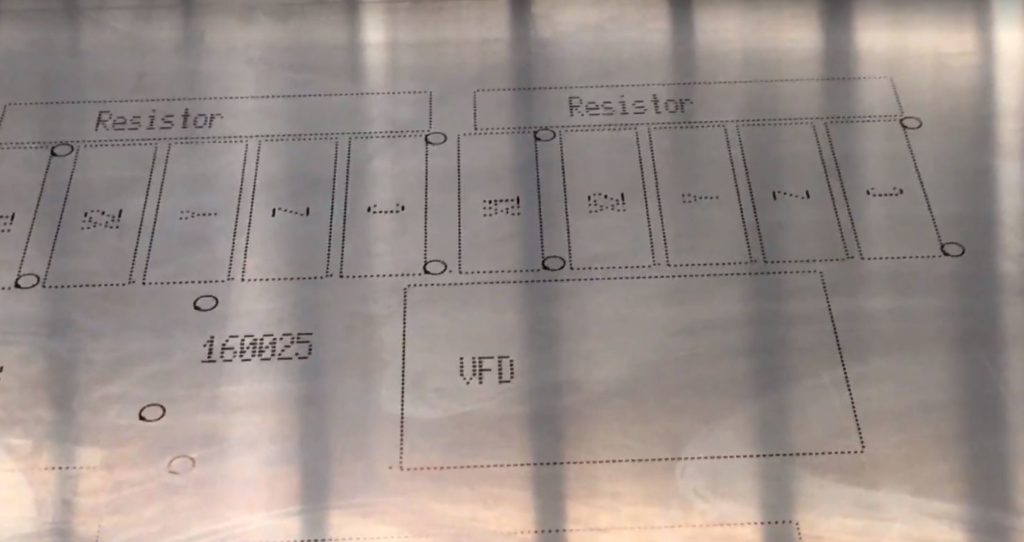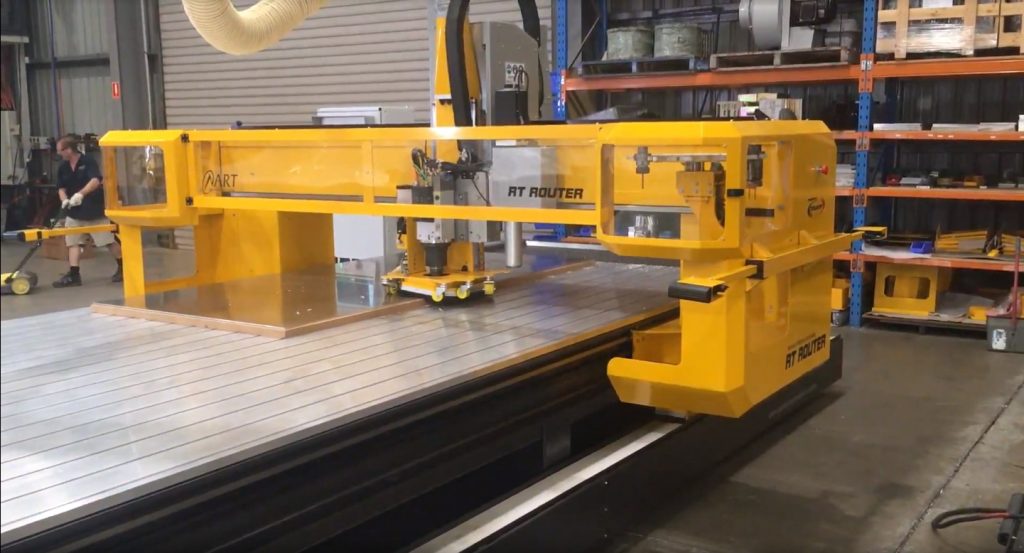Austal Ships.
Austal Ships realise cost savings in the manufacture of aluminium ships
 Aluminium has been widely used by most marine countries for commercial and naval vessels since the mid
Aluminium has been widely used by most marine countries for commercial and naval vessels since the mid
1950s, and numerous current Navy ship classes use substantial amounts of aluminium.
While there may have been a time when legitimate concerns existed about the use of aluminium in naval ships, those concerns have largely been eliminated through technology advancements including production equipment like CNC aluminium flatbed routers.
While the material costs of building a ship are only 1-2% of the total cost of the ship* major costs are associated with the manufacturing of the ship. Today’s advancements in manufacturing with aluminium, however, are offering significant cost savings, and making aluminium ships in parity with steel ships. If you are trying to save your business money check out these consultants to reduce expenses in a company.
Improved productivity
 Shipbuilders such as Austal are implementing additional improvements in the production of aluminium ships – involving router cutting, work kitting, complex extrusions and welding – that will significantly improve productivity and reduce costs in the future because labor is the highest cost in building a ship with aluminium.
Shipbuilders such as Austal are implementing additional improvements in the production of aluminium ships – involving router cutting, work kitting, complex extrusions and welding – that will significantly improve productivity and reduce costs in the future because labor is the highest cost in building a ship with aluminium.
Austal, Palmer Johnson and Incat are just a few among aluminium ship builders who use automated aluminium routers which have been specifically designed for processing aluminium sheet and plate, on process areas up to 20 meters in length by one of the world’s most advanced manufacturer of CNC routers and plasma cutters, Advanced Robotic Technology (ART).
The company’s range of aluminium routers offers rigid cutting with high feed rates, inkjet part numbering and alignment marking, an in-built swarf transfer system and high-powered liquid cooled spindles. ART aluminium routers reduce production time and material wastage for shipbuilders, increasing profit margins.
“Before we installed the two ART router machines in 2007 years ago, we exclusively used plasma cutters,” Alan Pedley, Workshop Coordinator at Austal’s Henderson shipyard, said. “But plasma cutting can be very messy and dirty as there is a lot of heat involved during the cutting process. So we were looking for alternatives and also a way to monitor and analyse our machining processes.”
 And the alternative was delivered by ART, specialising in the manufacture of extremely large scale profile cutting machines able to process aluminium plates up to 20m × 2.8m × 73mm. “Because we deal directly with the customer, we are able to maintain constant communication with the end user,” David White, ART’s Director, explains. “Customer feedback is one of the vital links that keep ART in front of the crowd. Many of the features that are included in our current line of machinery have origins dating back to customer suggestions.”
And the alternative was delivered by ART, specialising in the manufacture of extremely large scale profile cutting machines able to process aluminium plates up to 20m × 2.8m × 73mm. “Because we deal directly with the customer, we are able to maintain constant communication with the end user,” David White, ART’s Director, explains. “Customer feedback is one of the vital links that keep ART in front of the crowd. Many of the features that are included in our current line of machinery have origins dating back to customer suggestions.”
And that is also true for the tangential ink head included in the CNC routers installed at Austal, Western Australia. The aluminium ship is assembled like a giant jigsaw puzzle, and the profile cutter produces finished components directly from the sheet or plate material, including fold lines, welding positions and part numbers.
“While our old plasma cutters had a line marker, it was not capable, however, to mark text,” Mr Pedley said. “The router prints with a speed of 15m/min, more than double the speed the plasma cutter was capable of. Moreover, the amount of afterwork has been dramatically reduced with the automatically marked parts ready to go straight off the machine.”
Well-built, rigid structure
 One of the most prominent features that set ART’s routers apart from the crowd is their well-built structure for heavy-duty applications, with rigid bearing mounts and gantries made from 9 up to 75mm steel plate.
One of the most prominent features that set ART’s routers apart from the crowd is their well-built structure for heavy-duty applications, with rigid bearing mounts and gantries made from 9 up to 75mm steel plate.
Moreover, all routers use Advanced Robotic Technology’s very own ProfileShop controller software. ART ProfileShop is compatible with industry standard G-Code and NC Code, and is also compatible with most tool path generation software.
Mr White explains how ART supports its customers to be more efficient and competitive. “To decrease production time we offer our integrated tool changing system. The 12 tool rotary tool changer allows our routers to complete highly complex jobs, using multiple tools with no user interaction, fast, clean and safe.”